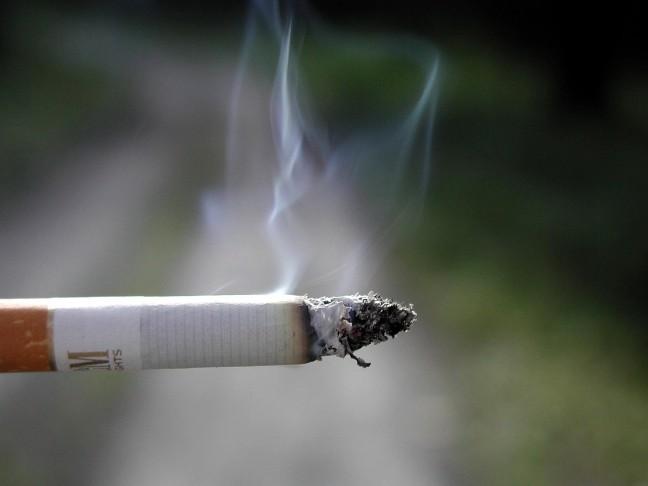After meeting with student government leaders to discuss changes to University of Wisconsin’s current smoking policy, UW officials look toward the future possibility of becoming a completely smoke-free campus.
An update of UW’s smoking policy leads to an inside look at UW’s smoking percentages and smoking resources.
Smoking on campus
As a whole, the number of students in college who typically smoke is considered relatively low in comparison to other groups of smokers.
At about 8 percent, students with undergraduate degrees who smoke count for about half of the amount of people within the general population who smoke, Megan Piper, UW Department of Medicine assistant professor, said.
As of 2015, the total number of people who smoke in the U.S. general population hit below 17 percent — a relatively low number compared to years past, she said.
Sarah Van Orman, University Health Services executive director, said the number of male and female college students who smoke varies considerably. A study conducted in spring 2015 revealed about 13 percent of male UW students admitted to smoking within the last 30 days of taking the survey, while it was only about 7 percent of females.
Van Orman said UW research also shows smoking to be most common among international students.
But Van Orman said it’s important to note these percentages only account for students that have smoked cigarettes. Studies have only now begun to examine student use of electronic smoking devices.
“One of the challenges with [the percentages] is that the instrument we use [to measure the percent smokers] is a national instrument that is actually being updated,” Van Orman said. “It was really developed before electronic devices came to be, so we don’t really have any data either on our campus or really on college campuses nationally about electronic cigarette use.”
Cigarettes and electronic devices
According to data from the Center for Disease Control, the number of adults using e-cigarrettes from 2010 to about 2013 almost tripled.
Despite the recent trend in the usage of e-cigarrettes, university policy, city ordinances and even state law have all been silent on their use policies. Though UW has said e-cigarrettes are not allowed in university buildings, university policy plans to add them to their new smoking ban list that should soon be approved, Van Orman said.
The administration and faculty are currently working to approve changes to UW’s smoking policy, Van Orman said.
Piper too said UW’s Center for Tobacco Research and Prevention is just starting to conduct studies concerning e-cigarrettes and the percent of people who use them.
Creating a smoke-free campus
With the new campus smoking policy updates being circulated around UW’s faculty, staff and administration, questions have been brought up as to whether UW will eventually become a completely smoke-free campus.
There are already about 1,600 colleges in the U.S. that have gone smoke-free, two of which include UW-Madison’s sister schools, UW-Stout and UW-River Falls, Van Orman said. UW-Madison’s medical campus is smoke-free as well.
Though many campuses have committed to becoming smoke-free, Van Orman said it’s a difficult and complicated process because of the impact and potential consequences it has on the community.
Van Orman said university employees and international students would most likely be affected the most if the campus went smoke-free. But that doesn’t mean UW would want students or staff to have to cross the street just so they could smoke either, she added.
“It’s really important that adequate resources are available for people who might be smokers … [and] really understand who in the community are smokers to make sure they have access to work through all of those issues,” Van Orman said.
Though Piper has not studied the impacts a smoke-free campus may have on its surrounding community, she did say in businesses that went smoke-free, there was a significant decrease in the number of smokers and the increase in the level of health for employees who work at the business.
“When Ireland went smoke-free as a country, their emergency visits decreased dramatically, fewer people were having heart attacks,” Piper said. “You definitely see health effects when work places go smoke-free.”
With UW buildings already being entirely smoke-free, the health of the work environment is already improved, the question remains about what would happen if the entire campus went smoke-free, Piper said.
There are many consequences to consider before the university could ever become completely smoke-free, Van Orman said. But she said it’s important to have the conversation.
“At this point I think it’s important that our campus just start that conversation,” she said.


